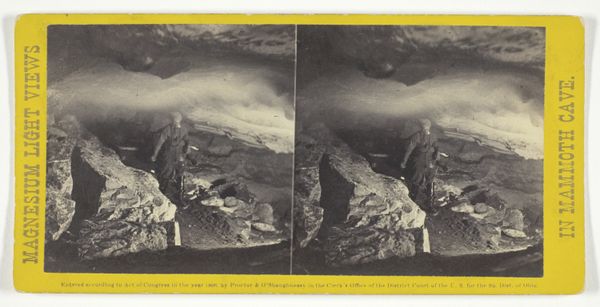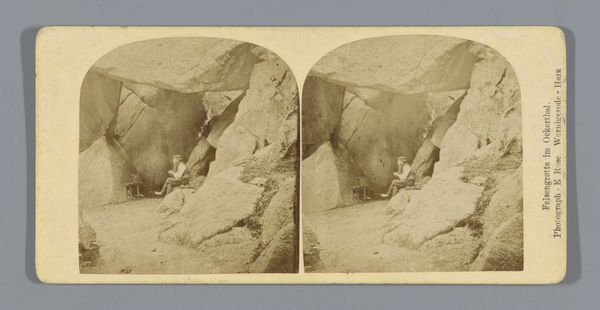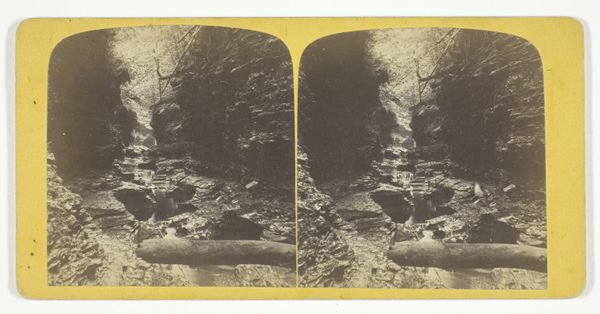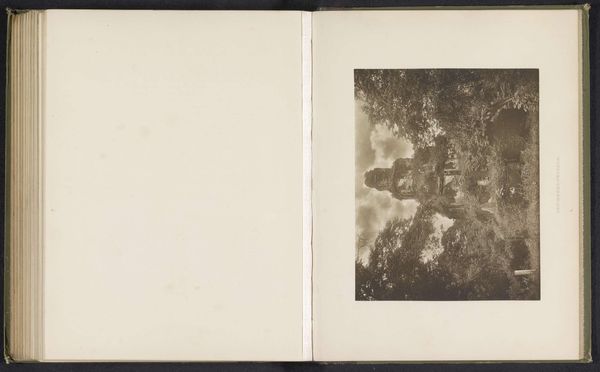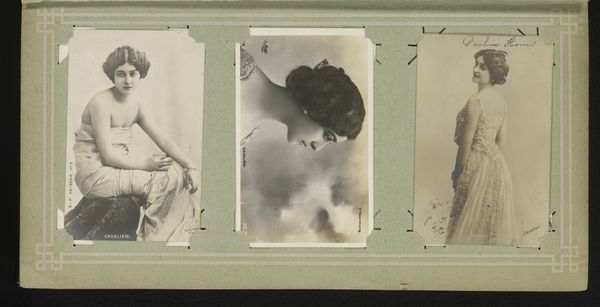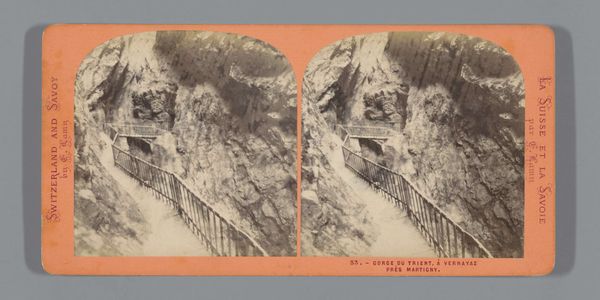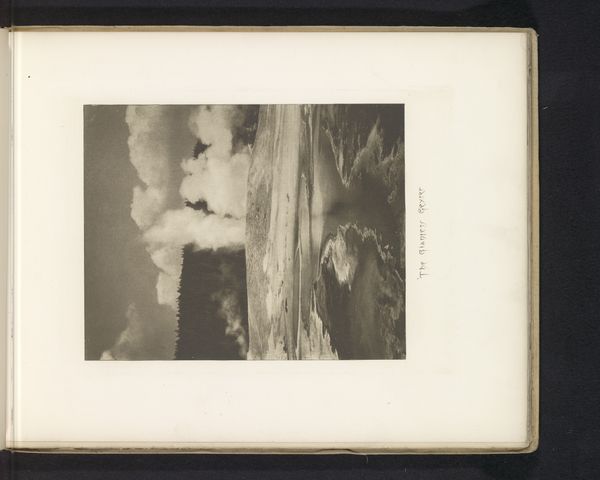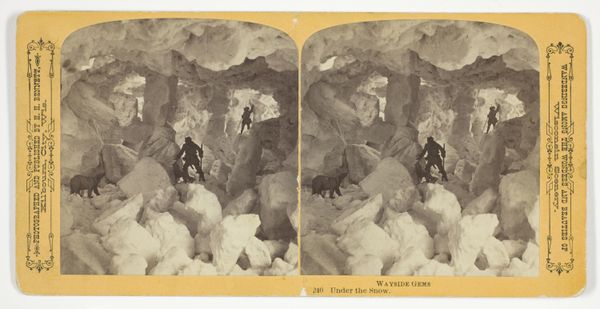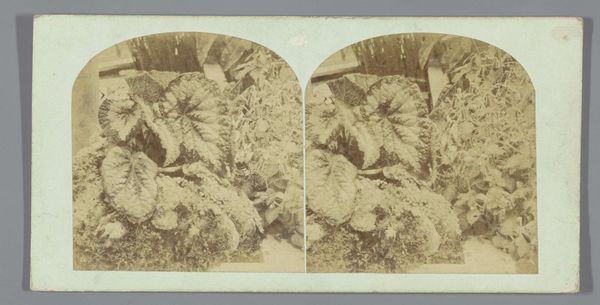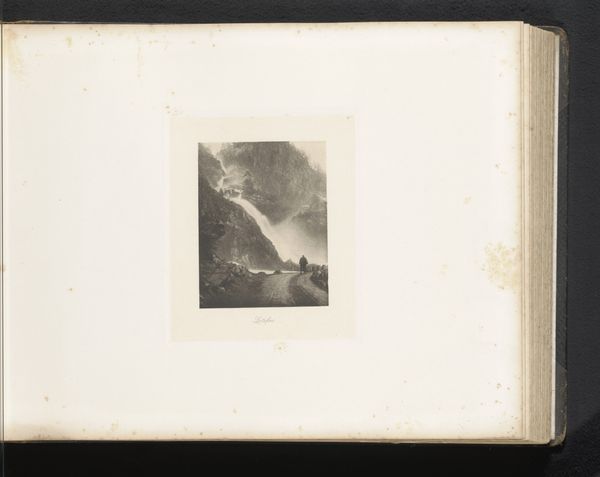
Interieur van een grot met waterval in het Bois de Boulogne te Parijs c. 1860 - 1880
0:00
0:00
Dimensions: height 85 mm, width 170 mm
Copyright: Rijks Museum: Open Domain
This stereoscopic image, produced by the London Stereoscopic Company, captures an artificial grotto and waterfall in the Bois de Boulogne, Paris. Stereoscopy was a popular form of 19th-century entertainment, and required a great deal of technical skill to produce. The process involved using a specialized camera with two lenses set apart at a fixed distance, mimicking the spacing of human eyes. When viewed through a stereoscope, two nearly identical photographs merged into a single three-dimensional image. What is interesting about this image is the illusion it creates. The Bois de Boulogne was transformed into a public park during the reign of Napoleon III, and the creation of artificial landscapes became an activity for Parisians. The image itself further abstracts reality, turning a constructed landscape into a packaged commodity. It's a reminder that even in the age of mechanical reproduction, the artistry and craft of image-making play a crucial role in shaping our perceptions.
Comments
No comments
Be the first to comment and join the conversation on the ultimate creative platform.
